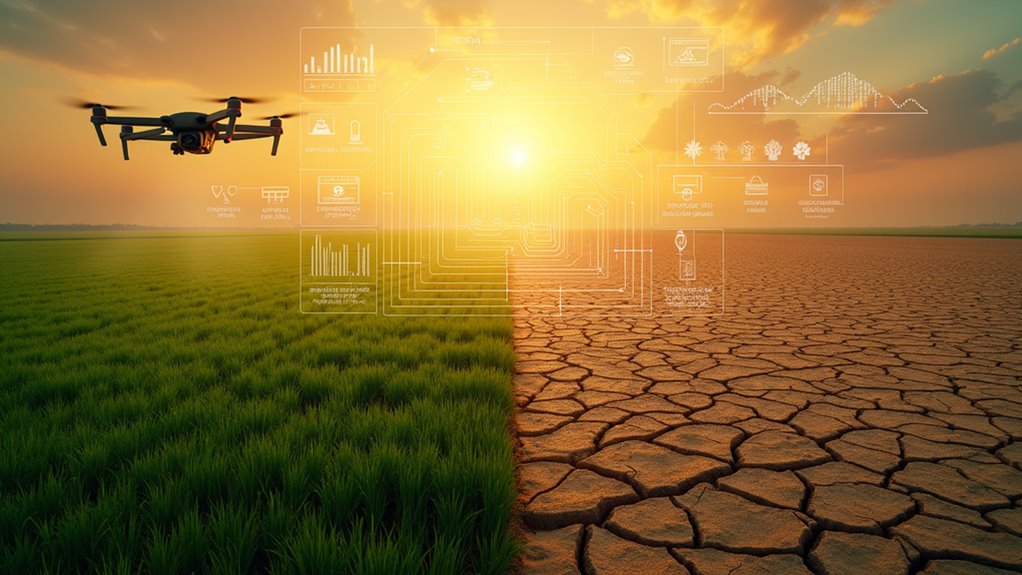Can AI conquer global hunger? Not exactly—this isn’t Iron Man swooping in with infinite rice dispensers. But artificial intelligence is getting hands dirty in smart ways: drones zip over disaster zones, apps nudge small farmers on when to water crops, algorithms zap food waste, and programs sniff out fraudsters double-dipping in aid. Sure, politics and patchy data get in the way, and AI isn’t serving soup with a human smile. Want the gritty details and some surprising optimism? Stick around.
How, in a world where your fridge can nag you about expiring yogurt, are we still struggling to feed everyone? It’s a fair question. With artificial intelligence (AI) now powering everything from TikTok algorithms to the “smart” toaster that occasionally burns your bagel, you’d think global hunger would be toast by now. Yet, here we are—still facing food insecurity on a massive scale.
But AI isn’t just about making sure you don’t forget your snacks. It’s quietly, and sometimes loudly, transforming how humanitarian food aid is delivered. In fact, AI enhances efficiency in humanitarian work, saving precious time and money that can be redirected toward those who need it most.
Consider this: AI can slash emergency damage assessments from weeks to hours. When disaster strikes, drones and deep-learning models can assess what crops survived, who needs help, and where the trucks should go—all before you’ve brewed your next coffee. No more waiting for clipboards and paper maps.
Plus, advanced algorithms can spot double-dipping in aid programs, so resources get to the right people, faster.
AI isn’t just a crisis tool. In fields from Kenya to Kansas, precision agriculture is getting a geeky upgrade. Smallholder farmers now use AI-driven apps to decide when to plant, water, or fertilize, maximizing yield and minimizing waste.
Picture a farmer in rural India checking her phone to see which part of her field needs extra nitrogen—because her AI-powered soil monitor texted her. The result: more food, less waste, and a slightly smug sense of technological superiority.
But what about the journey from farm to fork? AI is streamlining supply chains, pinpointing bottlenecks, and reducing spoilage. Imagine a world where grocery stores stop overstocking bananas just because an algorithm says so—goodbye, mushy landfill fruit.
Efficient logistics mean lower costs, less waste, and a smaller carbon footprint. To make this possible, organizations like the World Food Programme are developing global artificial intelligence strategies to guide their efforts from 2025 to 2027.
Of course, AI isn’t a magic wand. Data gaps, ethical dilemmas, and the simple fact that hunger is as much about politics as potatoes mean there’s no easy fix.
Still, as long as we pair clever tech with local smarts and a dash of human empathy, AI might just help us win the fight against global hunger—one smart fridge at a time. AI-powered data analysis tools could process vast amounts of agricultural information, providing insights that revolutionize food production systems globally.





